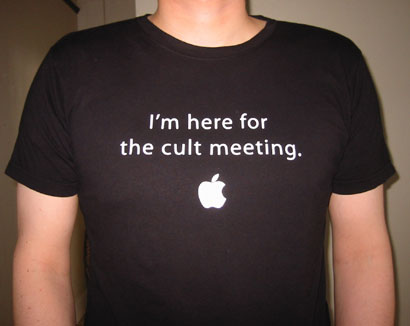The Cult of the Product
In the movies you can build a baseball stadium in an Iowa cornfield and get millions of people to show up. Who wouldn't want to see the ghost of Mickey Mantle play another game? In real life there are millions of details that go into constructing a baseball stadium, not the least of which are having a team and fans ready to fill it from day one.
The first scenario might be more romantic, but if you're looking to be a baseball mogul you'd better be operating in the second.
The same is true of your consumer internet venture. Most hackers and entrepreneurs spend their time thinking about just the product. "If we just build the most awesomest widget possible," they think, "people will love it and give us money." Product first, everything else second.
The Cult of the Product
This is the sentiment that embodies what I call the "cult of the product." Like the Field of Dreams, people in this mindset believe that product is the most important thing and if they build it customers will come flocking.
It's hard to blame anyone — these signals are everywhere in the technology industry. If you take Apple's public image at face value, for example, you'd believe that every product idea that comes out of the company springs fully formed from the head of Steve Jobs himself.

This is a carefully crafted illusion. In reality Apple has one of the most refined (and most well-guarded) design processes in the industry. If Steve Jobs is the heart of the company their design process is the blood.
This process helps them identify market needs and build the product that best satisfies that need. The function of a design process is to increase the value of the end-product and reduce the risk of shipping it.
Here's a great video of Steve Jobs discussing product strategy while he was still at NeXT:
The Components of a Successful Product
In order to succeed every company needs three components: a market, a product, and a distribution channel. You'll notice Steve Jobs talks about all three in the above video.
Most aspiring internet entrepreneurs think a lot about product and a little about the market. Their distribution strategy, however, often amounts to little more than "get mentioned on TechCrunch a lot."
Think back to the most successful consumer internet startups: Google, Craigslist, MySpace, YouTube, Facebook, etc. How many of them needed TechCrunch-style press to drive growth? None. And that's not just "luck" — each had a distribution strategy built in from day one.
In fact, building a web product, like any product, requires you to think about all of these things. A product that fits a market is useless if you have no way to get it in front of customers, and even the best distribution model can't help if nobody wants to use the product you're distributing.
Vanquishing the Cult
Apple analyzes markets through a top-dow, design-centric process, but we can flip this around and apply a bottom-up, data-driven approach.
In fact, we can use the same principles of scientific product development to reason about business strategy.
For example, we might start with the hypothesis that 1,000,000 people are willing to pay $50/month for your product.
To test this you need to get real bullets in your gun as fast as possible. This means talking to potential customers and getting their feedback, implementing simple prototypes and measuring their performance, etc. Put your product and product ideas through the most rigorous process, using a combination of qualitative and quantitative feedback.
Then, using the data you gathered from your measurements and tests, iterate. It might turn out that nobody was willing to pay more than $20/month for your a simplified version of your product. This data lets you form new hypotheses.
Did you have the right product/market fit? Were you approaching the right customers? Should you lower your price? Should you improve the product? Should you have a different pricing scheme entirely? Each of these questions is itself a testable hypothesis and can be approached through an empirical, data-driven process.
The important point is to have a process, whether design-centric or data-driven, that helps you identify the key market, product, and distribution challenges of your business.
Sacrificing even a little bit of your business to the cult of the product is an unnecessary risk.